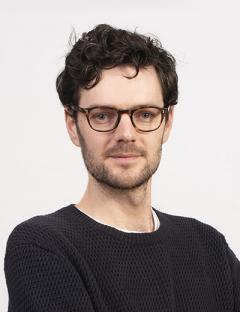Timothy Cannings
Students Harry Shaw and Freya Whittaker have worked together to produce this article as part of our series of Academic Interviews; featuring Timothy Cannings!
Using statistics to save lives
Developing new statistical methods for use within medicine

Timothy Cannings is a lecturer in statistics and data science at the University of Edinburgh, having completed his PhD at the University of Cambridge in 2015. We spoke to him about his time in academia and future projects he plans to work on.
As you might know, a lot of maths students don’t have a solid idea of why they picked the subject or where they want to take it – and Tim was the same. His motivations for doing statistics changed over time; he became more passionate when starting his PhD, but before that, he picked it as he found the courses interesting. Even during this and his MSc, he found he was going with the flow, with the bigger goal focussing on academia and research, but still having options rather than one rigid, set path. For many, the goal of going into research when at undergraduate isn’t clearly attainable: how do you achieve this and do you need to have a fixed plan? His tip for undergraduate students looking to go into research is this; he believes that you should do what you are interested in, which is also a good research philosophy when picking projects, and one he has followed.
During his PhD, he found he liked statistics as it has a directly appreciable practical use, whilst still containing maths, and it was an area that, at the end of his doctorate, he realised he had something to offer. His current work combines creative and innovative mathematical reasoning to develop new statistical methods, and he is often motivated by cutting-edge data-driven applications. We can see this in medical statistics precision medicine, which is an area Tim has experience in, and is an area that can help people in an observable way.
Recently, Tim worked on therapeutic solutions for cancer patients, in which he uses genomic data to predict tumour relapse rates. When speaking about the interesting research topics he’s covered, he said this collaboration with Cambridge Cancer Genomics was one of the most intriguing, as every time he spoke to them there was a new, exciting update to talk about – although most research projects are similar with the excitement of updates. What are his plans after this, we ask? He mentioned how he is quite broad with his research topics but is still interested in cancer genomes. His next project is awaiting review and funding, with COVID-19 unfortunately slowing the process. He divulges what it is going to focus on.
This endeavour is motivated by projects he’s worked on recently and even inspired by friends he’s talked to about their projects – he has friends in start-ups, with one involved in a neural engineering venture called BIOS.health. BIOS are using AI to decode and encode the signals from the brain to the body, in order to treat chronic health conditions. Tim comes into this as he wants aims to extract the key statistical challenges faced by BIOS. By adapting those issues into a statistical problem that he’s worked on during his previous research and PhD called classification, which is where you want to make a binary prediction based on data: do I have this particular disease or not?
An algorithm can implement classification, but as Tim mentions, many older statistical methods that may have worked well in standard settings 50 years ago aren’t capable of dealing with the sheer volume of data now. For example, neural data is incredibly complex and we can’t measure it well; so with that comes a lot of challenges for statisticians. How can we develop a new set of methods to deal with the noisy and even missing data that traditional algorithms cannot necessarily deal with? This is what Tim’s future research will focus on: how can we develop robust methods for modern problems?

